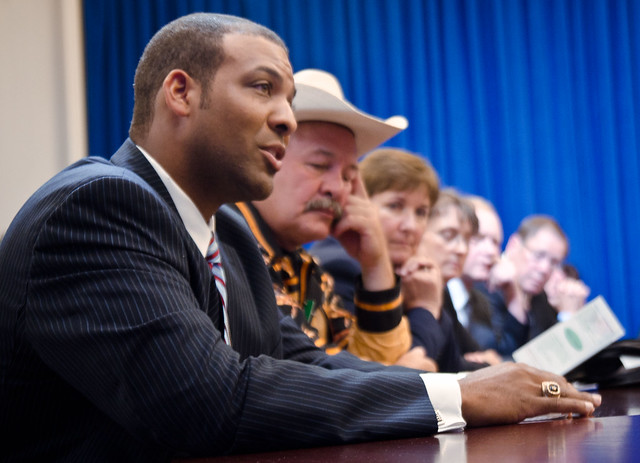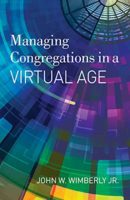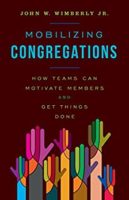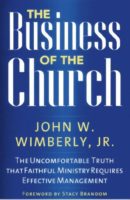When a congregational board sits down to make decisions, what if we think a bit differently about the participants? Let’s forget their names for a moment and view them as individuals who view the world from the perspective of the sub-cultures in which they work and live. Instead of recognizing Jane to speak, we would think to ourselves, “Let’s hear a word from the lawyer.” As the discussion progressed, we would hear from the plumber, academic, farmer, medical doctor and school teacher.

Such an approach recognizes that, in addition to being part of our congregation’s culture, board members come from secular vocational cultures that consume much of their daily lives. These vocational subcultures have their own values, ethics and worldviews. These sub-cultures become visible when, from time to time, someone violates the underlying ethics and values of, say, the legal or medical profession. These powerful subcultures are brought into every congregational board meeting, influencing the way board members view and decide upon the issues before them.
My father was pastor of a congregation outside Detroit, Michigan in the 1940s and 1950s where the membership was primarily blue-collar workers and executives from automotive-related industries in town. He then moved to being pastor of a congregation in Madison, Wisconsin, a city dominated by state government and university academic-types. He told me that when he was in Michigan, he would bring an idea to his leaders; they would debate the matter; and then vote on it. This was the way they made decisions in their workplaces. Up or down, yes or no.
In Madison, when he brought an idea to his board they would debate it for a while and then create a special committee to study the matter. A year later or so, they would report back their findings. My Dad said, “By the time they came back with a recommendation, it usually was either no longer timely or we had lost the passion around the idea.” The moment for decision-making had passed without a decision. It was a classic government and academia model of decision-making.
Vocational sub-cultures
In both Michigan and Wisconsin, the culture of the congregation was deeply penetrated and influenced by the vocational sub-cultures decision-makers brought to the governing board. I was reminded of the importance of this reality while re-reading Edgar Schein’s classic work on organizational culture, Organizational Culture and Leadership. Schein, professor emeritus of management at MIT, is an organizational psychologist who almost created the field. He helps readers understand how cultures work. I think some of his teaching assistants helped him update the recent edition with helpful insights from the 21st century.
As Schein worked with corporations, he began to see that cultures outside the organizational culture oftentimes had a defining impact on the workplace. Focused on the company’s culture, he initially failed to see the influence of the external sub-cultures on its decision-making. Describing a company dominated by engineers, Schein talks about their infatuation with the ingenuous things they created. The engineering culture celebrates those who create amazing contraptions, whether it be a space vehicle or an iPhone, but–crucially–ignoring whether it is marketable or not.
The problem for this particular company was that many of these brilliant contraptions were not marketable. Because of the engineering subculture they brought to the company, the engineers failed to appreciate the need for keen market analysis which might indicate whether a particular invention, no matter how brilliant, would sell. To help the company change its culture, Schein had to learn to think and talk in terms engineers would appreciate. The company needed to create a culture that not only appreciated ingenuity but utility; not just the power of imagination but the power of marketing.
Values from the workplace
So it can be with the congregational board members sitting around a table. They can be more focused on values flowing from their workplaces than the purpose of the congregation. Let’s imagine that they are considering a major renovation project for the congregation’s facilities. Every board member acknowledges that the building sorely needs to be renovated. However, they differ as to how and whether to proceed.
The attorneys on the board will probably want to be sure that the “case” to renovate is a convincing argument. The teachers may be focused on how it impacts the congregation (students). The nurses will want to know if everyone’s input is being taken seriously and valued (the input of nurses is too often discounted in a hospital). The farmer may want a patient approach, arguing that not everything has to be accomplished in one season. You get the idea.
Much of the literature I read about congregations focuses almost exclusively on the culture of the congregation itself. If Schein is correct, and many of us believe he is, then we need to be spending much more time analyzing how the various sub-cultures we bring to our congregations is impacting our decision-making.
I have focused on the impact of vocational sub-cultures. We also need to consider the impact of sub-cultures that relate race, ethnicity, gender, geographic regions, among many others. When I was in my mid-thirties, I was moderator of a synod whose membership was majority southern. As a classic Yankee, I preferred fast talk and even faster decision-making. I couldn’t understand the push-back I was getting from some of the Synod’s leadership council. Finally, a wise old Southern woman pulled me aside and said, “John, we just don’t think that fast down here. You need to slow down.” With humor and grace, she taught me the importance of regional sub-culture.
As we consider changing the cultures of our congregations, what sub-cultures are present in the congregation and its leadership that need to be considered with special care? Schein teaches us that we fail to analyze organizational sub-cultures at our own risk.
John Wimberly is an experienced pastor and consultant. As a consultant, he has worked with congregations and judicatories on strategic planning, staff designs for the 21st century, and congregational growth as well as financial and administrative management. He has MBA, MDiv, and PhD (theology) degrees. His books focus on effective management and leadership. John believes congregations can have a bright future!



